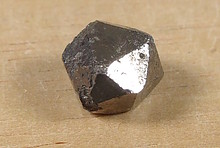Home PageAbout MindatThe Mindat ManualHistory of MindatCopyright StatusWho We AreContact UsAdvertise on Mindat
Donate to MindatCorporate SponsorshipSponsor a PageSponsored PagesMindat AdvertisersAdvertise on Mindat
Learning CenterWhat is a mineral?The most common minerals on earthInformation for EducatorsMindat ArticlesThe ElementsThe Rock H. Currier Digital LibraryGeologic Time
Minerals by PropertiesMinerals by ChemistryAdvanced Locality SearchRandom MineralRandom LocalitySearch by minIDLocalities Near MeSearch ArticlesSearch GlossaryMore Search Options
The Mindat ManualAdd a New PhotoRate PhotosLocality Edit ReportCoordinate Completion ReportAdd Glossary Item
Mining CompaniesStatisticsUsersMineral MuseumsClubs & OrganizationsMineral Shows & EventsThe Mindat DirectoryDevice SettingsThe Mineral Quiz
Photo SearchPhoto GalleriesSearch by ColorNew Photos TodayNew Photos YesterdayMembers' Photo GalleriesPast Photo of the Day GalleryPhotography
╳Discussions
💬 Home🔎 Search📅 LatestGroups
EducationOpen discussion area.Fakes & FraudsOpen discussion area.Field CollectingOpen discussion area.FossilsOpen discussion area.Gems and GemologyOpen discussion area.GeneralOpen discussion area.How to ContributeOpen discussion area.Identity HelpOpen discussion area.Improving Mindat.orgOpen discussion area.LocalitiesOpen discussion area.Lost and Stolen SpecimensOpen discussion area.MarketplaceOpen discussion area.MeteoritesOpen discussion area.Mindat ProductsOpen discussion area.Mineral ExchangesOpen discussion area.Mineral PhotographyOpen discussion area.Mineral ShowsOpen discussion area.Mineralogical ClassificationOpen discussion area.Mineralogy CourseOpen discussion area.MineralsOpen discussion area.Minerals and MuseumsOpen discussion area.PhotosOpen discussion area.Techniques for CollectorsOpen discussion area.The Rock H. Currier Digital LibraryOpen discussion area.UV MineralsOpen discussion area.Recent Images in Discussions
Mineralogical ClassificationIMA 2014-053 = tewite
26th Feb 2019 13:28 UTCMarco E. Ciriotti Manager
▪ Li, G., Xe, Y., Xiong, M. (2019): Tewite: a K–Te–W new mineral species with a modified tungsten-bronze type structure, from the Panzhihua-Xichang region, southwest China. European Journal of Mineralogy, 31, 145-152.
Abstract:
Tewite, with end-member formula (K1.5□0.5)Σ2(Te4+1.25W0.25□0.5)Σ2W5O19 or K1.5(Te1.25W0.25)Σ1.5W5O19, is a new mineral species (IMA2014-053), discovered in the vicinity of Nanyang village, Huaping County, located in the south of the Panzhihua–Xichang region, southwestern China. Tewite occurs in the Neoproterozoic Sinian light-weathered biotite–quartz monzonite, near the contact zone with gabbro. The associated minerals are alkali feldspar, biotite, clinoamphibole, ilmenite, zircon, zoisite, tourmaline, monazite-(Ce), allanite-(Ce), scheelite, tellurite and the new mineral wumuite (KAl0.33W2.67O9, IMA2017-067a), in addition to an unidentified, potentially new mineral corresponding to WO3. Tewite forms platy crystals that range from 0.08 × 0.1 × 0.1 to 0.1 × 0.2 × 0.5 mm in size. The crystals are greenish yellow, with a light-yellow to white streak, translucent to transparent, and with adamantine luster. Mohs hardness is 3½–4, and the tenacity is brittle. It has perfect {100}, {001}, and {010} cleavages, and the calculated density is 6.903 g/cm3. The mineral is biaxial positive with 2V = 70°. The Gladstone–Dale relationship predicts an average index of refraction of 2.04. The chemical composition determined by wavelength-dispersive electron-microprobe analysis is (wt%, average of n = 16): Na2O 0.13, K2O 5.08, WO3 83.34, TeO2 11.32, total 99.86. The empirical formula, based on 19 O, is (K1.61Na0.06□0.33)Σ2.00(Te1.06W0.35□0.59)Σ2.00W5O19. The eight strongest X-ray powder-diffraction lines [d in Å (I) (hkl)] are: 6.486 (50) (040), 3.8333 (100) (001), 3.6212 (30) (200), 3.1983 (65) (080), 2.4541 (50) (081), 1.8442 (30) (390), 1.6365 (25) (401), and 1.5743 (55) (480). Refinement of the crystal structure (R1 = 0.075) gave the following data: orthorhombic, space group Pban, a = 7.2585(4), b = 25.8099(15), c = 3.8177(2)Å, Z = 2. Tewite has a new tungsten-bronze (TB)-type derivative structure. Distorted TeO6 octahedra break TB slabs into ribbons which are displaced by ½ a relative to their neighbors, while K partly occupies two mutually exclusive sites in hexagonal channels || c. Short-range order and displacement of K ions are likely responsible for an observed incommensurate modulation of the average structure indicated by week satellite reflections, which were not considered in the structure refinement. The formation of the mineral may be related to the nearby quartz-vein-type Au mineralization; the mineral is formed by the metasomatic reaction of a high-temperature fluid rich in W and Te with the potassium feldspar in the monzonite. Tewite is a mineralogically unique K–Te–W oxide. The mineral is classified as a composite oxide, New Dana Classification class 07.04.03, of stoichiometry A2B2C5O19.




Mindat.org is an outreach project of the Hudson Institute of Mineralogy, a 501(c)(3) not-for-profit organization.
Copyright © mindat.org and the Hudson Institute of Mineralogy 1993-2024, except where stated. Most political location boundaries are © OpenStreetMap contributors. Mindat.org relies on the contributions of thousands of members and supporters. Founded in 2000 by Jolyon Ralph.
Privacy Policy - Terms & Conditions - Contact Us / DMCA issues - Report a bug/vulnerability Current server date and time: April 26, 2024 22:39:41
Copyright © mindat.org and the Hudson Institute of Mineralogy 1993-2024, except where stated. Most political location boundaries are © OpenStreetMap contributors. Mindat.org relies on the contributions of thousands of members and supporters. Founded in 2000 by Jolyon Ralph.
Privacy Policy - Terms & Conditions - Contact Us / DMCA issues - Report a bug/vulnerability Current server date and time: April 26, 2024 22:39:41











